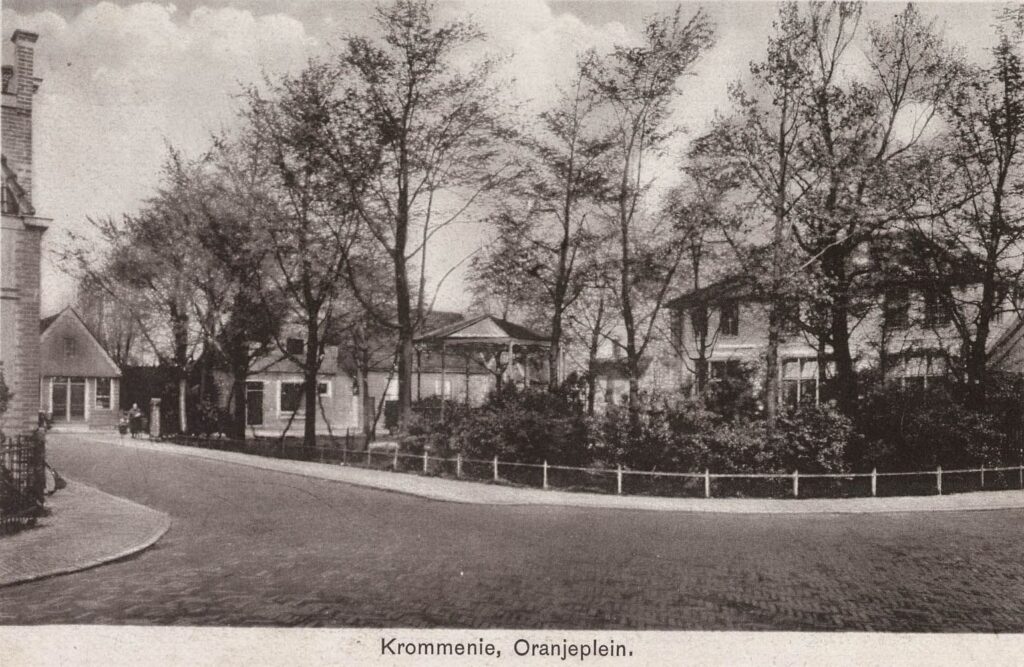Just like most villages in the Zaan region, Krommenie was too small to be affected by the Housing Act of 1901, which compelled bigger cities to provide good and healthy homes for the lower classes. Nevertheless, building associations soon sprung up here as well, and enthusiastically started to build. ‘Helpt elkander’ (Help each other) was the first of them, later to be renamed ‘De Volkswoning’ (The People’s Housing). Their first developments were located to the east of the Zuiderhoofdstraat and Noorderhoofdstraat (Southern and Northern Main Street). The development in the Prins Hendrikstraat was the first in the region to be built under the Housing Act, in 1908. It consists of 19 single story houses, located in between the existing old paths and built in brick to lower the risk of fires. All houses had front and back gardens.
The housing schemes were patronised by the big industrialists of the town. The board of the linoleum plant, the weaving mills, the Leguit and Sons joinery workshop and de Kaars Sijpesteijn factories donated money or initiated the construction themselves.
The area around the Oranjeplein was built on a piece of land formerly known as Kloosterland (Convent Grounds). It was the second project to be completed in Krommenie after the Housing Act. The first houses along the Van Hogendorpstraat and the Van Limburg Stierumstraat were designed by Veldkamp & Wenink Architects and built by the Haarlem builder J. Van Schagen. The rest of this development is more varied, as can be seen here around the Oranjeplein.
The bandstand was an eye-catching element in the small communal park. It was used by local music groups up untill the 1930s, when it was replaced by a bigger one in the Agathapark and eventually demolished. The school has also gone, torn down in the 1970s just as it was celebrating its first centenary.
– Partly taken from: “Sociale woningbouwwijken 1900-1945 Zaanstad Cultuurhistorische verkenning”, 2020 –





